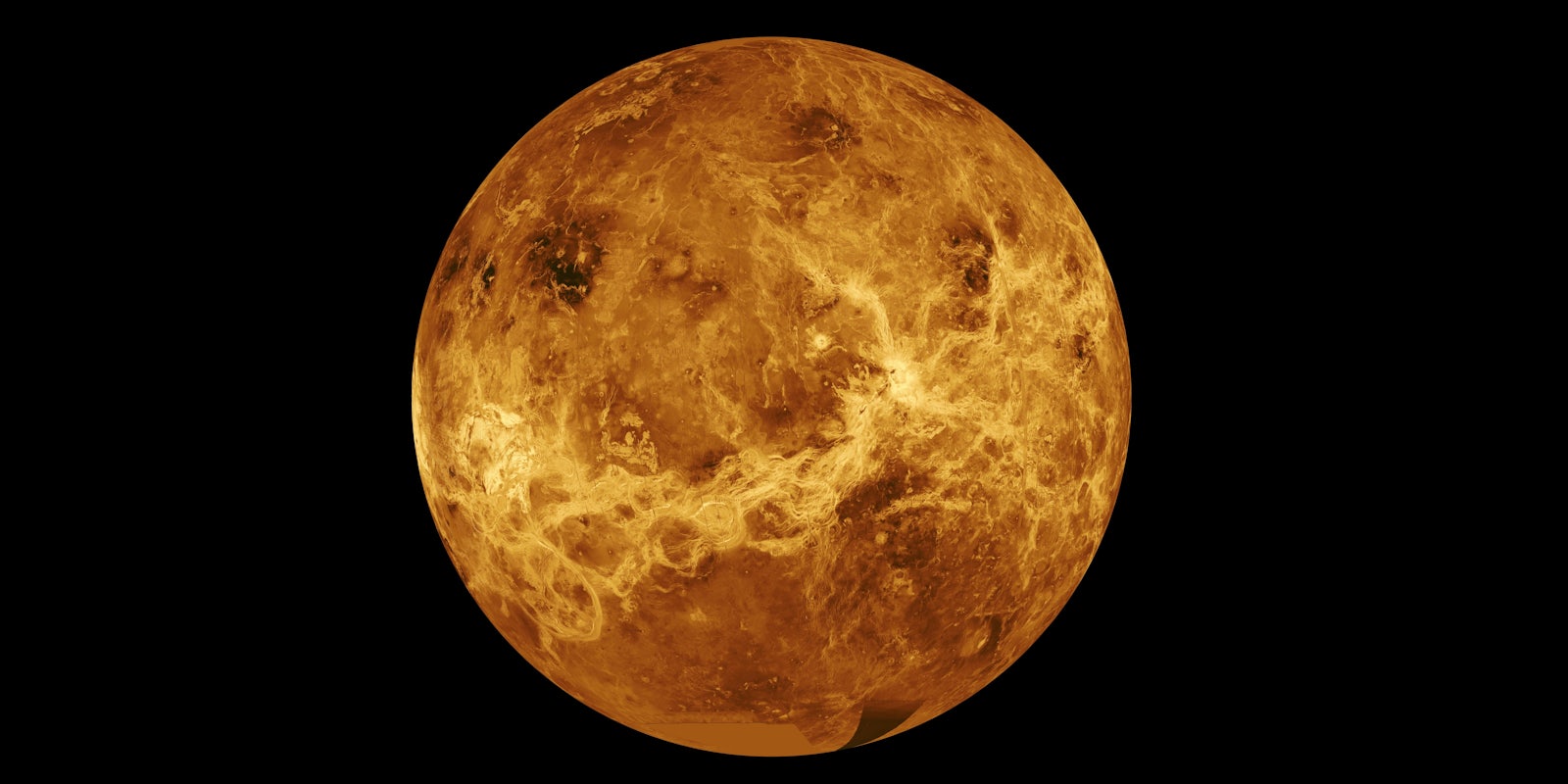Is there life on Venus? New research suggests there might be, although not on the planet’s surface. Venus’ clouds could provide a habitat for microbes, opening up another avenue for life in our solar system.
The research in question was published in the journal Astrobiology last week, theorizing that Venus’ clouds could support microbial life. It builds on earlier theories about the planet’s atmosphere, because while the surface is too hot and acidic to support Earth-like life, higher altitudes are a more survivable temperature.
Working from observations of the planet’s cloud layer, this new paper builds a case for microbial life on Venus. It’s not quite the flashy alien discovery some headlines suggest, but it bolsters a growing theory that Venus is less inhospitable than we thought.
This potentially habitable atmosphere exists around 31 miles above the surface, inspiring sci-fi stories about terraforming Venus to build cities in the clouds. Back in the 1960s, astrophysicist Carl Sagan offered the ambitious suggestion of bombing Venus with algae to create a more livable atmosphere, although that really was at the “fiction” end of science fiction.
At the moment, scientists haven’t actually proved that life exists in the Venusian clouds. They just think it’s an increasingly plausible theory. The next step would be to test that theory on Earth, recreating Venus’ atmosphere in a specialized chamber.
Venus has not been a high priority for space exploration in recent years, although several probes have orbited or landed on the planet since 1962. Located closer to the Sun than Earth, the surface temperature is 864 degrees Fahrenheit and has a thick, toxic atmosphere of carbon dioxide and nitrogen. There’s a popular theory—endorsed by NASA—that it might have had liquid water oceans in the distant past. But now it’s a wasteland of volcanoes and barren rock, and until more probes are sent to examine the atmosphere in detail, we won’t know for sure if those Venusian microbes really exist.


